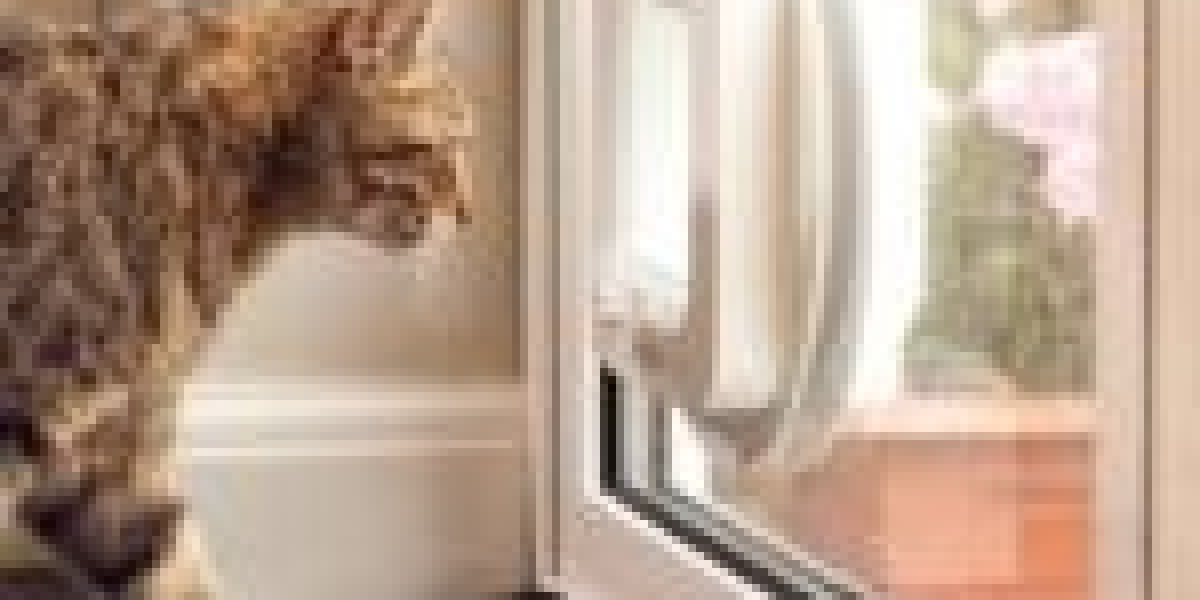The Ultimate Guide to Cat Flap Replacement: Why, When, and How
As a cat owner, it's necessary to offer your feline friend with a comfortable and hassle-free method to get in and leave your home. A cat flap, also referred to as a cat door, is an easy and reliable service that allows your cat to come and go as it pleases. However, like any other home product, cat flaps can wear with time, requiring replacement. In this post, we'll explore the reasons that cat flap replacement is necessary, the indications that show it's time for a brand-new one, and a detailed guide on how to change a cat flap.

Why Replace a local cat flap installer Flap?
There are a number of reasons why cat flap replacement is essential:
- Wear and tear: Cat flaps are subject to constant use, which can result in wear and tear on the hinges, seals, and other moving parts.
- Weather condition damage: Exposure to rain, snow, and severe temperature levels can cause the cat flap to deteriorate, resulting in water leaks and drafts.
- Insect control: Old or damaged cat flaps can offer an entry point for unwanted bugs, such as rodents, birds, or pests.
- Energy efficiency: A brand-new cat flap can assist reduce heat loss and energy consumption, making your home more energy-efficient.
- Improved security: Modern cat flaps often feature advanced security features, such as lockable doors and magnetic seals, to prevent unapproved entry.
Indications that Indicate it's Time for a New Cat Flap
If you see any of the following indications, it's likely that your cat flap needs to be changed:

- Leaks and drafts: If you notice water or air leaking through the cat flap, it's time to think about a new one.
- Difficulty opening or closing: If the cat flap ends up being stuck or challenging to open or close, it's likely that the hinges or seals are worn.
- Noise: If the cat flap makes extreme noise when opening or closing, it might be a sign that the moving parts are used out.
- Bug infestation: If you discover bugs entering your home through the cat flap, it's time to replace it with a brand-new one.
How to Replace a Cat Flap: A Step-by-Step Guide
Replacing a cat flap is a reasonably easy DIY project that can be completed with standard tools and products. Here's a detailed guide:
Materials needed:
- A brand-new cat flap
- Screwdriver or drill
- Measuring tape
- Pencil or marker
- Wood screws (if necessary)
- Weatherstripping (if essential)
Instructions:
- Measure the existing cat flap: Measure the width and height of the existing cat flap to make sure that the new one fits completely.
- Remove the old cat flap: Use a screwdriver or drill to get rid of the screws holding the old cat flap in location. Gently pry the cat flap out of the door or wall.
- Tidy the area: Clean the area around the old cat flap to get rid of any particles or dirt.
- Mark the position of the brand-new cat flap: Use a pencil or marker to mark the position of the new cat flap on the pet door fitter or wall.
- Drill pilot holes: Drill pilot holes for the screws that will hold the brand-new cat flap in place.
- Install the brand-new cat flap: Insert the new cat flap into the door or wall and screw it into location.
- Include weatherstripping (if necessary): Apply weatherstripping around the edges of the cat flap to avoid drafts and leaks.
Idea:
- Choose a cat flap that is appropriate for your cat's size and type.
- Think about a cat flap with advanced security features, such as lockable doors and magnetic seals.
- Utilize a level to make sure that the cat flap is set up directly and level.
- Check the cat flap before installing it to ensure that it works smoothly and silently.
Regularly Asked Questions:
- Q: How long does it require to change a cat flap?A: The time it requires to replace a cat flap depends on the complexity of the job and the individual's DIY skills. Typically, it takes about 30 minutes to an hour to finish the task.
- Q: Can I change a cat flap myself?A: Yes, changing a cat flap is a relatively basic DIY task that can be completed with standard tools and materials. Nevertheless, if you're not comfy with DIY jobs, it's advised to employ a professional.
- Q: How often should I change my cat flap?A: The frequency of changing a cat flap depends on usage and climate condition. On average, a cat flap need to be replaced every 5-7 years.
- Q: What are the advantages of a brand-new cat flap?A: A new cat flap technician flap can improve energy efficiency, security, and convenience for your cat flap Service. It can likewise decrease sound and prevent pest problem.
Conclusion:
Replacing a cat flap is an easy and necessary task that can enhance the convenience and benefit of your feline good friend. By following the step-by-step guide outlined in this post, you can quickly replace your old residential cat door installation flap with a brand-new one. Remember to choose a cat door for interior door flap that is suitable for your cat's size and breed, and consider advanced security functions to avoid unapproved entry.
Additional Resources:
- Best Cat Flaps for Energy Efficiency: [link]
- How to Choose the Right Cat Flap: [link]
- DIY Cat Flap Installation Tips: [link]
By supplying your cat with a comfy and practical method to go into and exit your home, you can improve its total health and joy. Remember to change your cat flap every 5-7 years to guarantee that it remains in great working condition.







